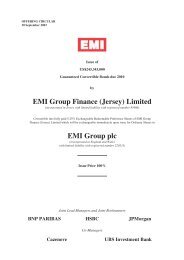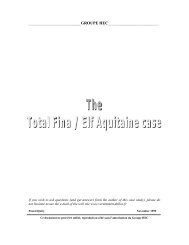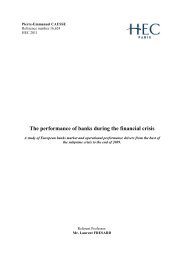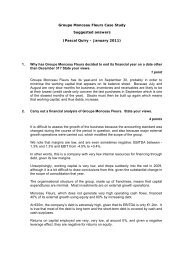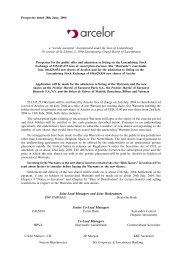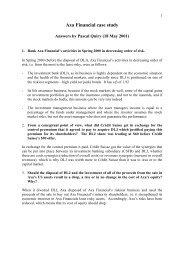Thesis_gd_final_vers.. - Vernimmen
Thesis_gd_final_vers.. - Vernimmen
Thesis_gd_final_vers.. - Vernimmen
You also want an ePaper? Increase the reach of your titles
YUMPU automatically turns print PDFs into web optimized ePapers that Google loves.
eceivables with $3.5 billion, other consumer loans with $0.17 billion, home equity lines of credit<br />
(HELOCs) with $0.11 billion. They also found that very few banks were securitizing most or all<br />
asset classes. On the contrary most of them were securitizing only one or a few asset classes.<br />
Unlike other innovations developed by commercial banks, securitization has been supported by<br />
government intervention through two government sponsored enterprises: Fannie Mae and Freddie<br />
Mac. Backed by an implicit government guarantee, these two institutions have played a key role in<br />
the residential mortgage market and the growth in mortgage-backed securities (MBS). According<br />
to DeYoung et al., citing Passmore et al., Fannie Mae and Freddie Mac have sold to investors<br />
$1,200 billion of MBS and are holding on their balance sheet another $1,000 billion.<br />
Uzun and Webb tried to determine the characteristics of banks engaged in securitization and the<br />
dri<strong>vers</strong> of securitization by designing a logit model taking into account a sample of 112 banks<br />
engaged in securitization and 112 banks not engaged in securitization. The sample of nonsecuritizing<br />
bank has been designed to match each securitizing bank with the non-securitizing<br />
bank which has the closest asset size. They found that securitizing banks are larger than nonsecuritizing<br />
banks (five times larger on average based on their matched sample). However they<br />
found no significant difference in total risk-based capital ratio or in tier 1 leverage ratio. In one of<br />
their model, they also found that growth in total assets is a significant factor.<br />
Asset size matters most because, like many other financial innovations, securitization benefit from<br />
strong scale economies, especially in the set up of conduits and asset pools where costs are rather<br />
fixed and not influenced by size (specific IT infrastructure, specialized teams, costs associated with<br />
legal and regulatory matters…). Even though community banks have not been able to develop<br />
their own securitization business they have used it as an important tool to geographically di<strong>vers</strong>ify<br />
their locally-concentrated loan portfolios, by purchasing MBS and financing it with loan sales to<br />
investment banks or SPV set up by larger banks engaged in securitization or by decreasing their<br />
exposure to traditional securities such as government bonds.<br />
ii) The impact of securitization on the banking system and banks’ business model<br />
Securitization has had a profound impact on the banking system and is doubtlessly at the origin of<br />
the so-called “subprime crisis”, referring to the mortgages contracted by high-risk borrowers with<br />
low income, bad credit history, high loan-to-value and payment-to-income ratios.<br />
The most visible consequence of securitization has been a boom in credit, especially household<br />
credit. This has materialized by the rise in residential real estate mortgages. According to Heilpern<br />
et al. (2009), the stock of outstanding residential real estate mortgages reached $11 trillion at the<br />
end of 2007, of which an estimated $2 trillion were subprime and another $1.1 trillion were f home<br />
equity lines of credit (HELOCs). A HELOC is usually some sort of revolving or fixed credit in<br />
- 18 -



